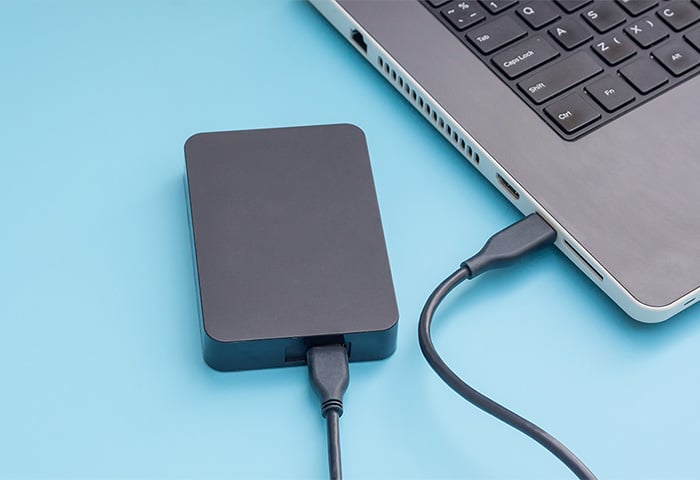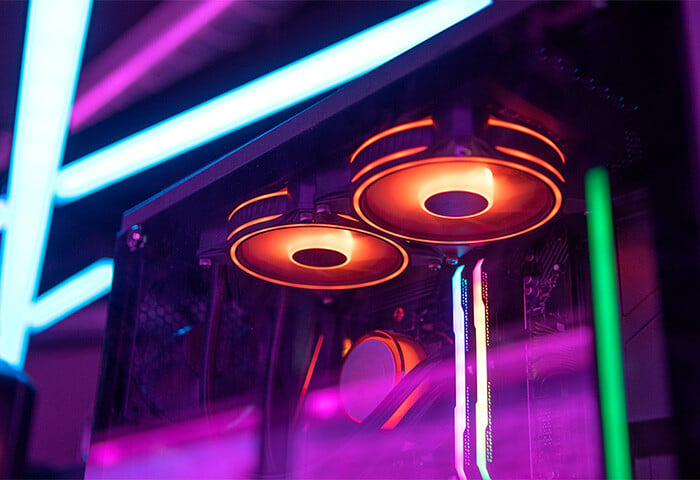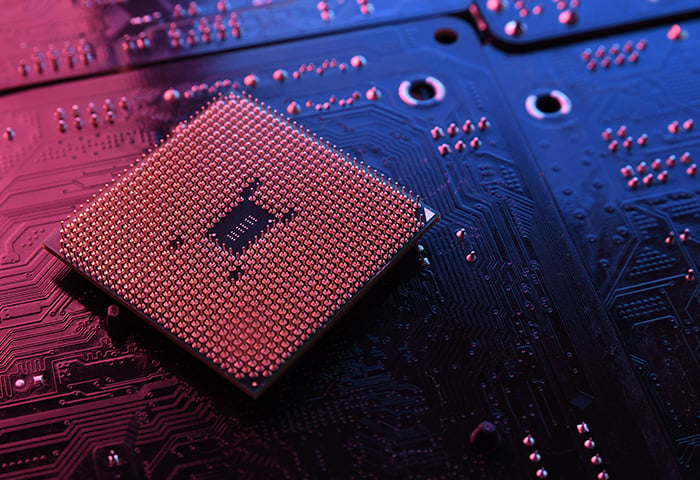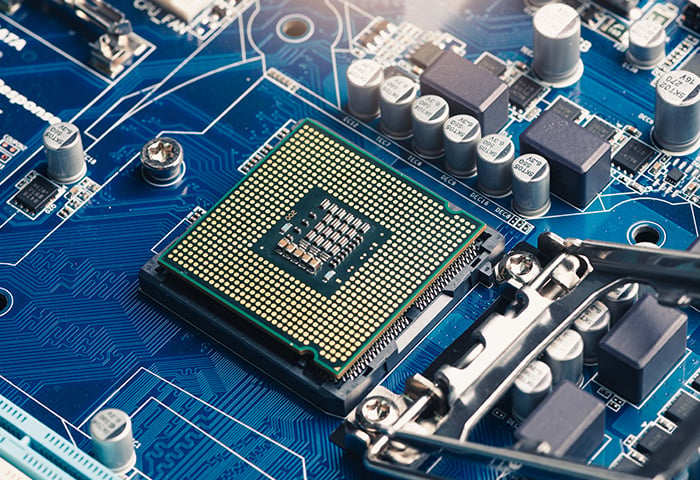Thinking about your computer as if it were a human brain is a useful analogy to help understand what RAM is. Your computer’s CPU is its prefrontal cortex, where executive decisions and functions take place; your hard drive’s storage space is the long-term memory; and RAM is your computer’s short-term memory or working memory.
RAM (random access memory) is where your computer works on current tasks like the programs and applications you have open. The more RAM you have, the more efficiently your computer can multitask and the better it will work. So, do you want to know how to check RAM? Let’s dive in.
How much RAM do I have? (Windows)
Here’s how to find RAM specs on Windows 10 and how to check RAM on Windows 7. (If you have an Apple computer, skip ahead to our section on Mac.)
-
Open up your Windows Start menu. Type in System Information and click on the result to open it.
/img_01.png?width=600&name=img_01.png)
-
Locate Installed Physical Memory (RAM). In this example, our computer has 16 GB of total RAM.
/img_02.png?width=600&name=img_02.png)
Now you know your PC’s total RAM capacity, but what about your available RAM? And also, what about your RAM speed and type?
How to check available RAM and RAM speed on PC
To check available RAM in Windows 10, follow these steps (see below for Windows 7):
-
Open up Task Manager by right-clicking on the Windows taskbar and selecting Task Manager. Navigate to the Performance tab — it will open with the CPU view selected, so you’ll want to choose the Memory view from the left navigation panel.
/img_03.png?width=600&name=img_03.png)
-
After clicking on Memory, you can view your RAM speed and other details.
/img_04.png?width=600&name=img_04.png)
In this example, we have 16 GB of total RAM, 6.2 GB of available RAM, and the RAM speed is 2400 MHz.
How to check RAM on Windows 7
To check RAM on Windows 7, follow the same steps described above to open Windows Task Manager. With the Task Manager open, navigate to the Performance tab.
/img_05.png?width=479&name=img_05.png)
Here you can see we have 1 GB of total RAM and 199 MB of available RAM.
Both of these examples show that while being used, PCs generally consume a large portion of their total RAM.
How to check RAM type on PC
Unfortunately, Microsoft doesn’t make it easy to find out what type of RAM you have on Windows 10, but you can quickly download a free tool to help you find out. This will also work if you want to know how to check RAM type in Windows 7.
-
Download CPU-Z.
-
Follow the instructions to install the app.
-
Open it and click the Memory tab.
/img_06.png?width=450&name=img_06.png)
Here you can see the type of RAM is DDR3.
How can I get more RAM (Windows)?
Were you surprised to find you have a small amount of RAM? Or that your PC uses up almost all of your available RAM? To harness more PC capacity and avoid potential issues with 100% disk usage in Windows, there are a few things you can do:
-
Buy more RAM. It may not be the cheapest option, but it's straightforward. You can upgrade the RAM in your PC. If you do install new RAM, consider stress-testing your PC afterwards to evaluate the stability of your new components.
-
Uninstall or deactivate programs and apps. Unused programs waste resources, so removing or uninstalling them is an easy way to free up RAM. You can uninstall apps by going to Settings, selecting Apps, and uninstalling any that you don’t use.
-
Perform Computer Maintenance. Check out our ultimate guide to cleaning up and speeding up your PC. Getting rid of resource-draining apps and programs and optimizing your computer with a PC cleaning tool, can make a big difference in terms of performance and available RAM.
If you don’t feel like buying new hardware or spending a lot of time on PC maintenance, consider getting an optimization tool like AVG TuneUp . Easily handle all the most important PC cleaning tasks in just a few simple clicks. Plus, free up valuable RAM space with AVG TuneUp’s built-in Sleep Mode.
While you use your computer, many programs run in the background, not only during startup but also throughout the day. Even if you don’t open these apps, they continue to run, consuming your RAM and CPU power.
You could force-quit them, but these stubborn background processes will usually just open up again the next time you restart your computer. Thankfully, AVG TuneUp’s built-in Sleep Mode feature lets you stop them from hogging your power — without you having to delete them.
Here’s how to free up RAM using Sleep Mode in AVG TuneUp.
-
Download a free trial of AVG TuneUp for PC.
-
Install the app.
-
Navigate to Background and startup processes. Here you can see all the invisible processes that are slowing you down and eating up your RAM.
/img_07.png?width=600&name=img_07.png)
-
Select all the apps you don’t want running in the background and hit SLEEP.
/img_08.png?width=600&name=img_08.png)
-
Sit back and enjoy all the increased RAM you now have!
How much RAM do I have? (Mac)
It’s even easier to find out how much RAM you have on Mac. In fact, a quick RAM check will reveal your total RAM, RAM speed, and RAM type all in one place.
-
Click the Apple icon in the top-left corner of your screen and select About This Mac.
/img_09.png?width=331&name=img_09.png)
-
Look at the Memory heading.
/img_10.png?width=600&name=img_10.png)
Here you can see your total RAM, RAM speed, and type of RAM all listed together. In this example, there’s 16 GB of total RAM; our RAM speed is 2133 MHz; and our RAM type is LPDDR3. To learn more about what these numbers and letters mean, see our complete RAM guide.
How to check available RAM on Mac
Your Mac’s total RAM capacity is different from how much available RAM you have right now. But checking your available RAM is easy too.
-
Hit command and the space bar to open up Spotlight Search. Type in “Activity Monitor” and open it up.
/img_11.png?width=600&name=img_11.png)
-
Select the Memory tab at the top, and look at the bottom of the Activity Monitor window.
/img_12.png?width=600&name=img_12.png)
Physical memory is your total RAM, while Memory Used is the amount of RAM your Mac is currently using. In this example, our Mac is using 13.9 GB out of 16 GB of total RAM. That’s a lot of RAM currently being used! Freeing up some of this memory will help to speed up your Mac and make it work better.
How can I get more RAM (Mac)?
Has checking your RAM speed or capacity left you disappointed with your computer’s performance or output? Here are three quick ways to lighten the load on your computer’s resources and make your RAM work better:
-
Close background processes and startup items. Did you know that many apps run in the background or upon startup, even if you’re not actively using them? Sleuthing out these hidden resource-hogs and silencing them can free up considerable RAM capacity.
-
Increase your RAM capacity. Not every Apple machine lets you perform hardware upgrades. But if your computer allows it, you can add more RAM pretty easily. See our dedicated guide to learn how to upgrade RAM on your Mac.
-
Clean up your hard drive. RAM storage and disk storage are different. But if you’re low on RAM, your operating system (OS) can’t keep all its working processes in its short-term memory, and will be forced to move some things into long-term storage.
When you switch back and forth among a lot of processes, your OS is forced to retrieve the necessary data from your hard disk and put it back into your RAM. This process — called paging or swapping — wastes a lot of time, so having space available on your hard drive makes things easier. Try removing bloatware, large apps you no longer use, and other junk files to free up more space.
Not sure exactly how to deal with background processes or clean out your storage space? Don’t worry — that’s why we built AVG TuneUp for Mac, a tool dedicated to cleaning up your computer quickly and easily so that you don’t have to do it yourself. Get automatic maintenance and enjoy a lighter, cleaner Mac today.
/How-to-check-your-RAM-memory-Hero.jpg?width=1200&name=How-to-check-your-RAM-memory-Hero.jpg)
/img_01.png?width=600&name=img_01.png)
/img_02.png?width=600&name=img_02.png)
/img_03.png?width=600&name=img_03.png)
/img_04.png?width=600&name=img_04.png)
/img_05.png?width=479&name=img_05.png)
/img_06.png?width=450&name=img_06.png)
/img_07.png?width=600&name=img_07.png)
/img_08.png?width=600&name=img_08.png)
/img_09.png?width=331&name=img_09.png)
/img_10.png?width=600&name=img_10.png)
/img_11.png?width=600&name=img_11.png)
/img_12.png?width=600&name=img_12.png)





/Signal-How-to-scan-and-fix-hard-drives-with-CHKDSK-in-Windows-Thumb.jpg)








